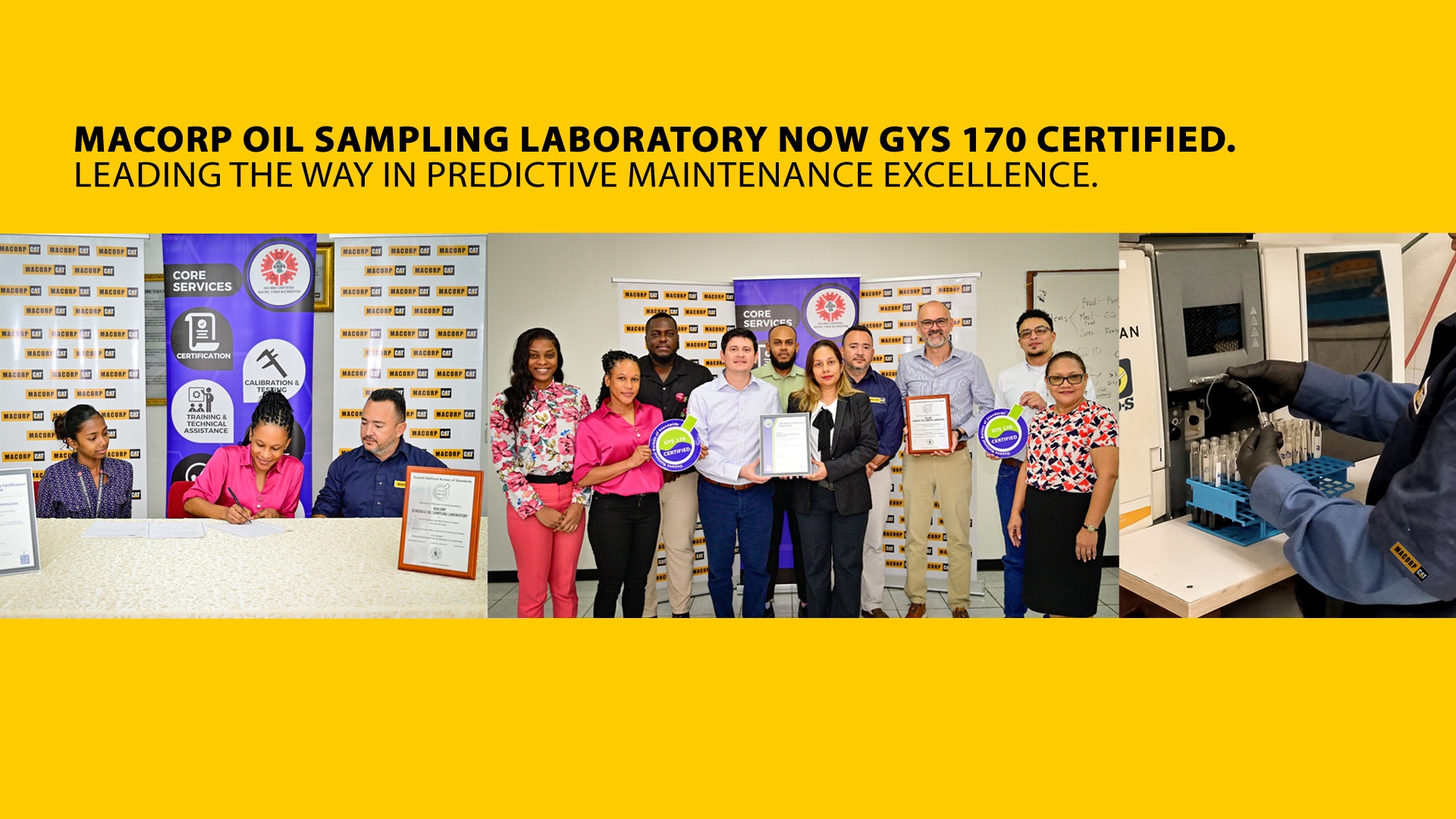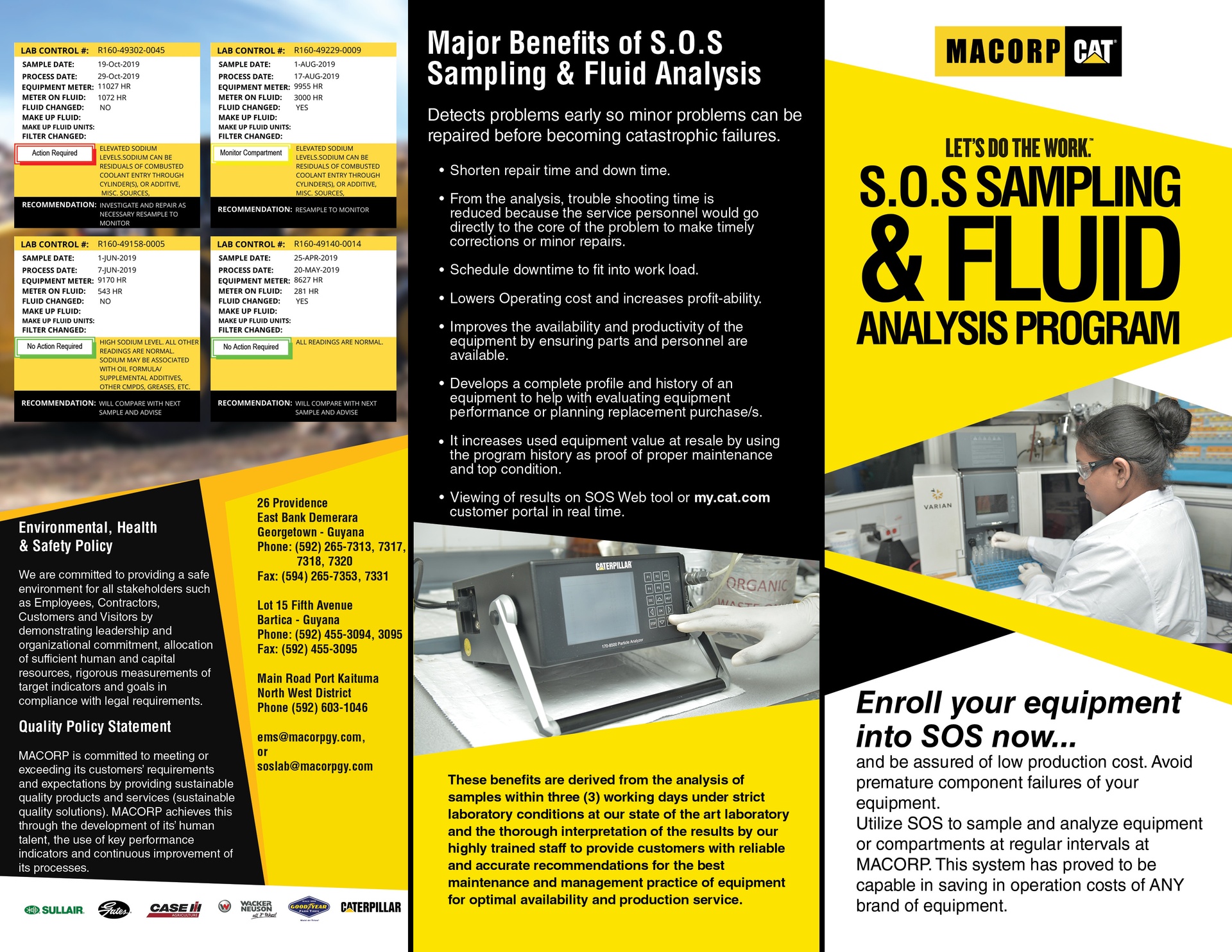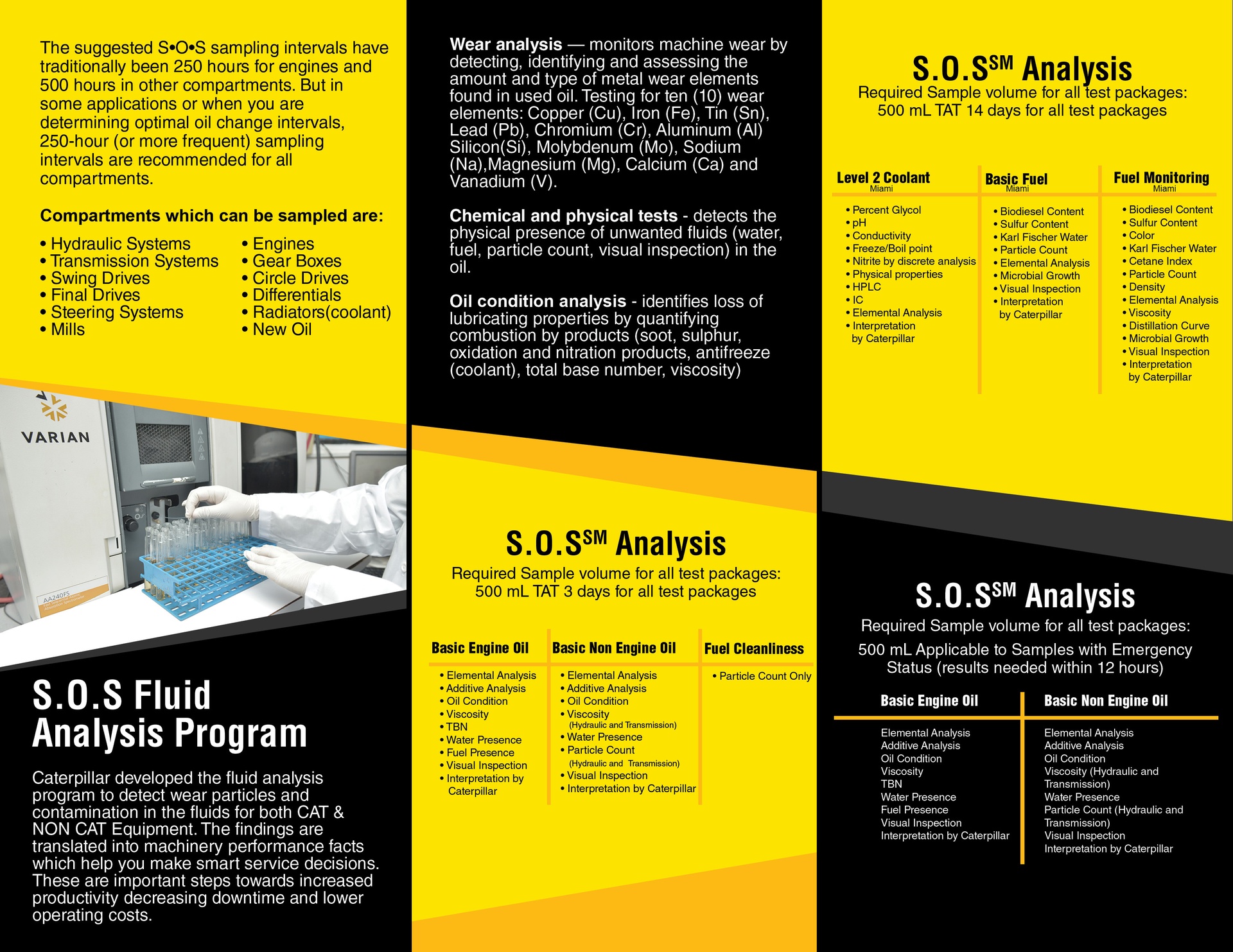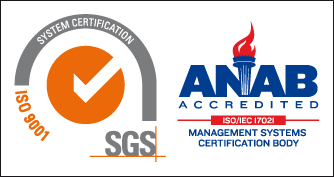S.O.S. Fluid Analysis

Caterpillar developed the fluid analysis program to detect wear particles and contamination in the fluid for both CAT and non-CAT equipment.
The findings are translated into machinery performance facts which help you make smart service decisions. These are important steps towards increased productivity, decreasing downtime, and lower operating costs.
Wear Analysis
Monitors machine wear by detecting, identifying, and assessing the amount and type of metal wear elements found in used oil. Testing for ten (10) wear elements: Copper (Cu), Iron (Fe), Tin (Sn), Lead (Pb), Chromium (Cr), Aluminum (Al), Silicon (Si), Molybdenum (Mo), Sodium (Na), Magnesium (Mg), Calcium (Ca), and Vanadium (V).
Chemical and Physical Tests
Detects the physical presence of unwanted fluids (water, fuel, particle count, visual inspection) in the oil.
Oil Condition Analysis
Identifies loss of lubricating properties by quantifying combustion byproducts (soot, sulphur, oxidation and nitration products, antifreeze and coolant, total base number, viscosity).


Major Benefits of S.O.S Sampling & Fluid Analysis
Detects problems early so minor problems can be repaired before becoming catastrophic failures:
- Shorten repair time and downtime
- From the analysis, troubleshooting time is reduced because the service personnel would go directly to the core of the problem to make timely corrections or minor repairs
- Schedule downtime to fit into workload
- Lowers operating costs and increases profitability
- Improves the availability and productivity of the equipment by ensuring parts and personnel are available
- Develops a complete profile and history of an equipment to help with evaluating equipment performance or planning replacement purchase(s).
- It increases used equipment value at resale by using the program history as proof of proper maintenance and top condition
- Viewing of results on SOS web tool or my.cat.com customer portal in real-time
These benefits are derived from the analysis of samples within three (3) working days under strict laboratory conditions at our state of the art laboratory and the thorough interpretation of results by our highly trained staff to provide customers with reliable and accurate recommendations for the best maintenance and management practice of equipment for optimal availability and production service.
The suggested S.O.S sampling intervals have traditionally been 250 hours for engines and 500 hours in other compartments. But in some applications or when you are determining optimal oil change intervals, 250-hour (or more frequent) sampling intervals are recommended for all compartments.
These benefits are derived from the analysis of samples within three (3) working days under strict laboratory conditions at our state of the art laboratory and the thorough interpretation of results by our highly trained staff to provide customers with reliable and accurate recommendations for the best maintenance and management practice of equipment for optimal availability and production service.
The suggested S.O.S sampling intervals have traditionally been 250 hours for engines and 500 hours in other compartments. But in some applications or when you are determining optimal oil change intervals, 250-hour (or more frequent) sampling intervals are recommended for all compartments.
Compartments which can be sampled are:
- Hydraulic Systems
- Transmission Systems
- Swing Drives
- Final Drives
- Steering Systems
- Mills
- Engines
- Gear Boxes
- Circle Drives
- Differentials
- Radiators (Coolant)
- New Oil
For more information, you can email us at [email protected] or [email protected]



